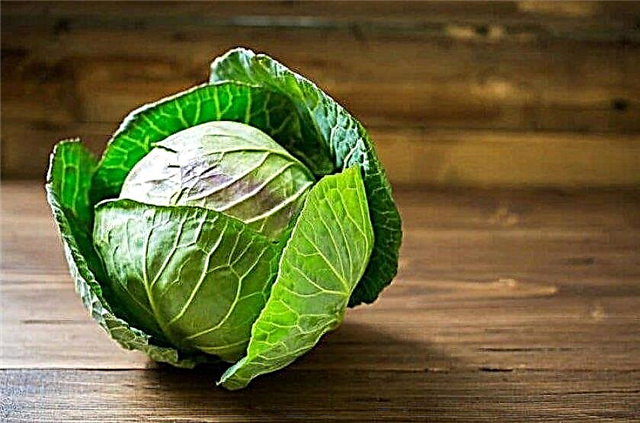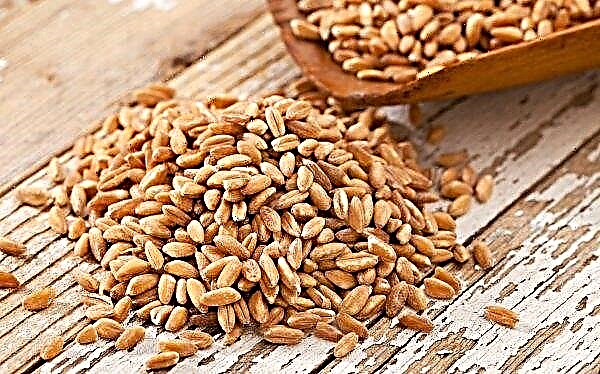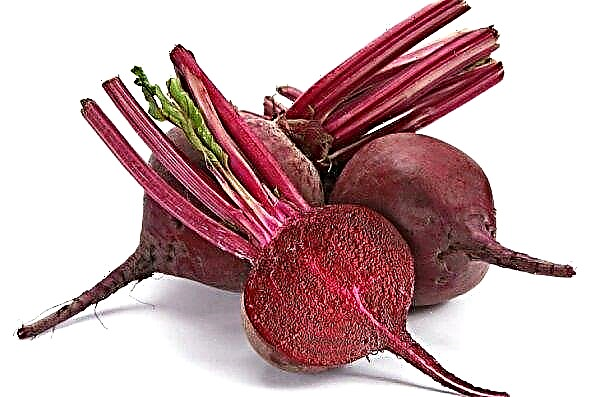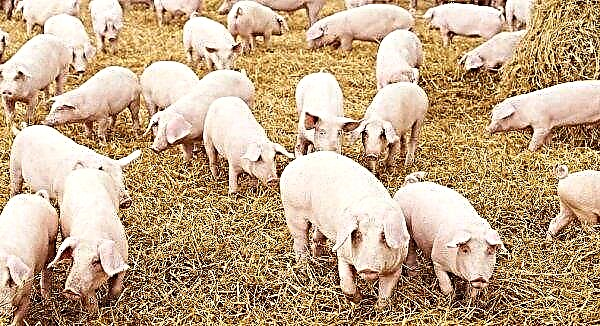The popularity of cabbage in Slavic cuisine is due not only to the versatility of its consumption, but also to its usefulness. In winter, this vegetable is indispensable due to its rich vitamin and mineral composition. Traditional medicine recommends using it to treat many diseases and strengthen the body. What is the peculiarity of the cabbage leaf, when and how to use it for therapeutic and culinary purposes - more on this later in the article.
Can I eat a cabbage leaf?
It is recommended to consume white cabbage daily in moderate portions. It can be freshly chopped, pickled or stewed vegetable, borsch, cabbage, cabbage rolls, dumplings or pies with the corresponding filling. The main thing is not to overeat, since cabbage in large quantities can provoke nausea and bloating.
For food purposes, chefs are advised to choose not old cabbage foliage, without thick core veins (such instances will be rough and not tasty even after a long heat treatment). It is also worth avoiding heads that are damaged by pests and warped. Ideally, the leaves should be well developed, slightly greenish or bluish, depending on the variety, color.
Experienced housewives always remove the upper leaf plates, getting to fresh and juicy. They should not have dried edges, signs of rot and black dots.
Did you know? According to ancient Roman beliefs, cabbage heads were formed from drops of sweat that fell from the forehead of the god Jupiter.
Healing properties
The culinary and therapeutic value of cabbage heads lies in their satiety, enriched composition and a number of beneficial qualities. For medicinal purposes, the product can be used internally or externally, applying whole leaves to a sore spot.
Traditional medicine recommends using the vegetable along with traditional medical methods of treatment, since ordinary cabbage leaves are capable of:
- normalize metabolic processes in the body;
- make up for the lack of vitamins, essential amino acids, minerals;
- reduce excess weight (with regular consumption);
- relieve internal and external inflammation, as well as pain;
- strengthen the immune system;
- provide atherosclerotic, anti-cancer effect;
- stimulate the kidneys and excretory system;
- strengthen blood vessels and heart muscle;
- fight bacterial pathological microflora (effective in diseases of the digestive tract, except for pancreatitis, and the respiratory system);
- reduce blood sugar and cholesterol;
- activate blood circulation in the treatment of diseased joints.
Did you know? The ancient Romans considered cabbage a festive dish and served exclusively boiled. And in China, the vegetable was regarded as cheap food - it was soaked in wine and given to the builders of the Great Wall of China.
Chemical composition
Cabbage is considered a dietary product, because it is characterized by low calorie content and a rich set of useful substances - it was after their discovery that the vegetable was recognized by scientific medicine as a natural medicine.
Nutrition value of white cabbage (per 100 g):
- proteins - 1.85 g;
- fats - 0.1 g;
- carbohydrates - 4.69 g;
- water - 90.405 g;
- ash - 0.75 g;
- starchy substances - 0.1 g;
- saccharides - 4.63 g;
- organic acids - 0.31 g;
- dietary fiber - 2.08 g;
- calorie content - 28 kcal.
Vitamins:
- ascorbic acid (C) - 44 mg;
- Biotin (H) - 0.103 mcg;
- beta-carotene - 0.04 mg;
- nicotinic acid (PP) - 0.709 mg;
- pantothenic acid (B5) - 0.21 mg;
- pyridoxine (B6) - 0.1 mg;
- thiamine (B1) - 0.03 mg;
- tocopherol (E) - 44 mg;
- riboflavin (B2) - 0.042 mg;
- phylloquinone (K) - 75 mcg;
- folic acid (B9) - 11 mcg;
- choline (B4) - 10.6 mg.

Macro and microelements:
- aluminum - 568 mcg;
- boron - 200 mcg;
- iron - 0.61 mg;
- iodine - 3.6 mcg;
- potassium - 305 mg;
- calcium - 48.2 mg;
- cobalt - 3.234 mcg;
- magnesium - 15.9 mg;
- Manganese - 0.16 mg;
- copper - 76 mcg;
- molybdenum - 9.8 mcg;
- sodium - 12.7 mg;
- nickel - 16 mcg;
- selenium - 0.3 mcg;
- sulfur - 37 mg;
- phosphorus - 31 mg;
- fluorine - 10.34 mcg;
- chlorine - 37.2 mg;
- chromium - 5.3 mcg;
- zinc - 0.43 mg.
Important! The composition of young garden cabbage is several times more nitrates than in watermelon. Experts call the stub the most harmful part of the head.
Use in traditional medicine
The healing properties of cabbage were known in the civilization of the ancient Romans. Even then, a fresh vegetable was used to treat organs of the gastrointestinal tract, respiratory system, as well as for pain relief, wound healing, relieving inflammation and for the purpose of rejuvenation.
Modern traditional medicine has significantly expanded the list of ailments in which cabbage foliage and its freshly squeezed juice help.
- Today, the leaf of this vegetable is recommended for therapeutic and prophylactic purposes with:
- gastritis;
- colitis;
- gastric ulcers of the duodenum and sigmoid colon;
- abscesses;
- festering skin wounds;
- rheumatism;
- low acidity of the stomach;
- liver diseases;
- high blood cholesterol;
- diabetes mellitus;
- constipation
- gout
- gallstone disease;
- atherosclerosis;
- obesity (as well as overweight);
- inflammation of any kind, including those caused by colds.
However, to obtain an immediate therapeutic effect, you need to use the product correctly. In some cases, finely grated eaten mass helps, and in others, drunk juice or a whole attached sheet. Next, we consider the most common cases and treatments for cabbage leaves.
For headache
To relieve pain, traditional medicine recommends applying a fresh leaf of the described vegetable to the forehead, temples or nape (depending on the location of the pain source). Previously, it is desirable to slightly crush or discourage, so that it becomes soft. In this position, you need to lie down for 15-20 minutes.
Did you know? The ancient Greeks believed in the miraculous properties of cabbage heads, using them to relieve intoxication. This plant has long been a symbol of sobriety in Hellas.
For sore throat
Acute perspiration and discomfort associated with diseases of the throat can be eliminated by three times internal use of half a glass of fresh cabbage juice throughout the day. It is important that the healing fluid is not cold. Gargling is also effective.
You can enhance the effect of this medicine with an additional compress from a fresh leaf of a vegetable on the neck: it must be kept for 2 hours, wrapped in a warm scarf.
With mastopathy
The term "mastopathy" modern official medicine means a number of pathologies associated with benign changes in the mammary glands. This can be soft tissue atrophy, fibrosis, cyst formation and any background disease for the development of cancer. Therefore, it is important to recognize the disease in a timely manner and begin immediate treatment.
Its symptoms are such factors:
- pain in the mammary glands (appear more often in the second half of the cycle and intensify before menstruation);
- increased breast sensitivity;
- glandular swelling and swelling of the glands;
- the presence of lumps in the chest.
With the help of cabbage, you can be treated in several ways:
- Apply compresses in the form of cabbage leaves to the chest. To do this, it is better to select several medium-sized leaves - those that are closer to the head of cabbage. Pre-wash them, cut a thick core vein and knead strongly. You can even make a few cuts for intensive juice extraction. With this compress, you can walk underwear all day, changing dried leaves to fresh. The therapeutic course, depending on the degree of the disease, can last from 3 to 20 days.
- Combine cabbage with other components - honey, butter. To prepare a compress, put melted honey or butter on a broken cabbage leaf. After this, the product is applied to the edematous breast and a clean cotton dressing is placed on top. This method is best used at night, keeping the compress until the morning. The course of treatment involves 3-4 repetitions.
Important! In this situation, you can not lose time, so be sure to consult a specialist and make a diagnosis.
With burns, bruises, ulcers and pressure sores
In such cases, compresses from whole leaves are ineffective. To solve the problem will help finely chopped or grated on a fine grater cabbage, mixed with raw egg white.
The resulting mass can be evenly laid out on a broken sheet plate or a sterile dressing, and then applied to a sore spot. It is important to pre-sanitize the vegetable components with boiling water so as not to introduce the infection into the wound.
With gout
When sore joints are tormented, attached fresh foliage may help. It is better to choose it from the middle of the head, then rinse, mash or beat it off and fix it on a swollen area with a bandage or cotton cloth. It is advisable to insulate this place with woolen clothing. Ideally, do the procedure at night. The pain will go away after 6-8 sessions.

How to use in cooking?
White cabbage is present on the table of people with Slavic roots throughout the year.
This is an indispensable ingredient for cooking:
- vegetable, meat and fish soups;
- cabbage soup and borsch;
- salads;
- casseroles;
- pies;
- dumplings;
- vegetarian cutlets.
Important! To prevent the cabbage from darkening during cooking, use enameled dishes.
In addition, the product is pickled, stewed, boiled, fried, fermented, and also used to make fresh juice. It is good to combine the vegetable with other vegetables, as well as spices (caraway seeds, anise, coriander, black pepper), apple and citrus juice (mandarin, orange), cranberries, lingonberries. At the same time, prolonged heat treatment is unacceptable, since the structure and nutrition of plant fibers are lost. To speed up the cooking process, it is recommended to grind fresh leaves with a knife or grater.
Contraindications and Precautions
There were no complications from overeating cabbage in medical practice. However, despite the many beneficial properties, a vegetable, even in small portions, can do much harm. We are talking about diseases in which the product is strictly contraindicated.
These include:
- increased intestinal motility;
- acute enterocolitis;
- tendency to spasms of the intestines and biliary tract.
The fact is that the vegetable contributes to irritation of the mucous membranes of the organs of the gastrointestinal tract: as a result, spasms and pain intensify.
In case of pancreatic dysfunction and acute forms of peptic ulcer, it is recommended to limit oneself only to boiled or stewed cabbage dishes.
Due to increased gas formation, the crude product is contraindicated in people suffering from flatulence.
Important! Before using fresh cabbage for food, it is recommended to thoroughly rinse the heads of cabbage, and then dip them in salted cold water for half an hour. These manipulations will clean the vegetable from dirt and residues used in the processing of insecticide pests.
Of course, cabbage is a valuable product, but you should not perceive it as a panacea. Treatment with leaves and vegetable juice is effective only as an additional means to traditional methods.













